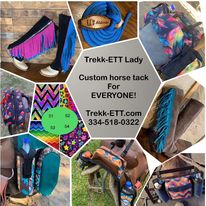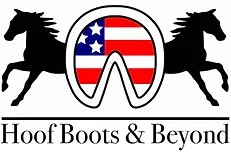Even out in the great wide-open there are things we horse owners can do to reduce our impact on the environment and take care of natural resources. Here’s what to remember.

It’s summertime, and we’re hitting the trails! But even out in the great wide-open there are things we horse owners can do to reduce our impact on the environment and take care of natural resources. Here are some tips to get you started down the right path toward greener horse trails.
Carry a manure fork in your trailer. Take home everything you and your horse brought or produced, including manure, old hay, and spilled bedding. If possible, throw a bucket of water on urine puddles to help dilute them. Smelly piles of manure and urine attract flies and can leave a mess for other trail users.
Teach and then encourage your horse to keep walking when he defecates on the trail. This helps prevent piles from forming and spreads manure out. If a group of riders stops for any length of time and a manure buildup occurs, dismount and kick the manure around to disperse it before riding on.
When mud and water accumulate on a trail, teach and encourage your horse to pass through puddles. Riding around these areas widens the trail, destroying more vegetation.
Stay on marked trails, and do not cut new trails, switchbacks, or corners. Whenever possible, ride single file to keep from widening and degrading trails. Never go off a trail into a sensitive area such as wetlands, bogs, or marshy meadows. Creating new trails without landowner permission can cause those areas to be closed to future use. New trails usually can’t be maintained and might reduce the amount of maintenance the system receives. It also potentially destroys wildlife habitat and might cause erosion and loss of valuable topsoil. Sediment that ends up in streams, ponds, and other water bodies can cause serious water quality problems.
In the parking area, avoid driving your truck and trailer over vegetation or into sensitive areas or widening parking areas in any way.
Invasive weed species in open spaces and wild areas are huge problems. Our shoes and our horses’ hooves can transport nonnative weed seeds that can take root and quickly out-compete native plants. This is particularly problematic when wildlife loses critical habitat or food sources or when toxic weeds move in. Inspect your horse’s hooves before leaving home to eliminate weed seed transmission. Brush your horse’s and dog’s coats while still at home to remove potential harmful seeds, particularly if your horse lives in a weedy area. Remove mud and foreign debris from riding boots as well as vehicle tires.
Take this one step further by managing your pastures so you can eliminate, or at least substantially reduce, invasive weeds on your property and their spread. Your local conservation district (locate your closest “CD” through an internet search with your county’s name and the words “conservation district”) can help.
Avoid tying your horse to trees or other vegetation. Doing so can seriously harm the tree, perhaps even destroying it. If you absolutely must tie your horse to a tree during lunch breaks or rest stops, look for the sturdiest one possible or a low-hanging branch. Teach your horse to stand quietly, as pawing can damage sensitive tree roots or cause soil erosion.
Observe wildlife from a distance. Don’t stalk or approach wild animals, and never feed them. Feeding wildlife damages their health, changes natural behaviors, and exposes them to predators and other dangers. Keep dogs under control at all times on a trail ride, but especially around wildlife. Avoid wildlife during sensitive times such as mating, nesting, raising young, or, for hibernating species, winter.
Trail riding is a healthy, fun activity for both horse and rider. It can give you a better appreciation for the land and its flora and fauna, and it will give your horse new learning experiences. How we as horseman treat the privilege of trail riding determines how well we can maintain existing trails, as well as open new ones.
The Horse: Your Guide To Equine Health Care Digital Edition
All the same equine health news and information as in the print version, but in an eco-friendly format, The Horse: Your Guide To Equine Health Care Digital Edition is available online days before the print version would arrive in the mail. The digital edition is the perfect choice for subscribers living outside of the United States who want faster delivery with no shipping cost!










